Rachel Neumeier's Blog, page 307
March 31, 2016
The lighter side of SFF
Here’s a very timely topic from SF Signal: various authors sharing their choices for “lighter” SFF novels, including incidentally Ursula Vernon.
Also Melinda Snodgrass, whose choices I vehemently disagree with; Mari Ness, whose reviews of classics like 101 Dalmatians can be found at tor.com; and plenty of others.
Now, me, I think of “lighter” SFF not just as stories with happy endings; not even as low-tension stories with happy endings; but as, you know, light. In tone, if not necessarily in topic.
In other words, I think of Terry Pratchett, whom incidentally not a single person mentioned in this post, an inexplicable omission. Am I off base here? Do you or do you not agree that Terry Pratchett’s books should be included in a list of “the lighter side of SFF,” even though his themes were often serious?
I also think of Edith Friesner and Gail Carriger — both appear on Kay Kenyon’s list
Mari Ness mentions Douglas Adams — of course! I should have thought of him, too — and, for something a little different, Sorcery and Cecelia. That’s an interesting choice and suggests to me that she is defining “lighter” not just as humorous, but also as . . . maybe comfort reads? I agree with the choice, and in fact another contributor, Valerie Valdes, also mentions another one by Patricia Wrede, Marelon The Magician.
Ursula Vernon goes for Robin McKinley, Juliet Marillier, and Iva Ibbotson — she’s looking mainly for happy endings, but also for comfort reads.
Anyway, this is an interesting set of suggestions that imo range overall from Definitely Light to Definitely Not Light. I mean, I mentioned above that I don’t agree with Melinda Snodgrass’s choices. She actually recommends The Thousand Names by Wexler, and while I totally agree this is a wonderful book and the start of an excellent series and should be widely recommended . . . light? Really? Enjoyable I will grant you, but definitely not light.
Participants also mention TV shows, anime, and games, none of which I know much about, so if you’re interested in any of those suggestions, click through and check out the post. I will say that the artwork of Showa Genroku Rakugo Shinju looks beautiful.

March 30, 2016
Science fiction and fantasy romance
Here’s an interesting post from the SFWA site: Romance tropes for SFF writers by Jeffe Kennedy.
…a recently released debut science fiction novel was marketed to romance readers as science fiction romance (SFR), but violated a major romance expectation … readers were especially incensed because the book violated the One Rule at the very end of the book. It did not have an HEA [Happily Ever After]. There are also indications that there will be a new love interest in the sequel, which is a precarious use of romance tropes.
Romance readers were enraged? Well, no kidding! The shocking thing to me about this is that this incident evidently sparked an “intense online debate.” What grounds for debate can possibly exist here? This is marketed as a romance but doesn’t have a happily-ever-after ending? I, too, would be ranting and flinging the book across the room.
Jeffe Kennedy makes the point that the readers who don’t understand this are the non-romance-readers:
An argument that gets introduced in a lot of these conversations – always from non-romance readers – is that the HEA/HFN is not mandatory. That it’s okay for a story to end tragically. “Romeo and Juliet” gets trotted out. And sure, that’s true! But “Romeo and Juliet” is one of Shakespeare’s tragedies! Sure, there’s a romance in it. You can even say the romance is the core of the story, but that doesn’t make it a romance. Why not?
Because it ends tragically, not happily.
I, as a reader who reads mainly SFF and also some romances . . . a reader who has always liked the occasional well done SFR but has only recently started reading contemporary romances . . . find this too obvious for words. So do experienced SFR writers, such as Sharon Shinn, who I’m sure would never dream of ending one of her SFR novels tragically. Her books totally have happy endings. As they should, because they are romances. Can you imagine Archangel if Gabriel had walked away from Rachel at the end and she had had shrugged and gone off with some other guy? Or in The Sharing Knife, if Dag had gone off to hunt malices and Dawn had cried a little and then married a farmer boy? Apparently that’s pretty close to what happened in the book in question.
As an ending, fine. As an ending for an SFF novel, fine. As an ending for any kind of romance where “romance” actually is meant to describe the genre, completely unfine.
This reminds me of my recent post about tension and suspense versus action, and how I commented how it’s interesting that the hugely popular romance genre is a fundamentally low-suspense genre. This is entirely because of the mandated HEA ending. I thought everyone understood this. Apparently some publisher’s marketing department doesn’t. It’s particularly annoying because every single romance reader who got suckered by this book is probably going to write off the author, when the marketing decision probably wasn’t hers at all.
Now, excuse me while I go read a romance so I can count on enjoying a happy ending.

March 29, 2016
Great books I haven’t mentioned for a while
So, last week Brandy had this post up at Random Musings: Books I love But Haven’t Talked About in a While, which is a very large category for us all, I’m sure, and a particularly good idea for a post. For me the standout from her post was Sorrow’s Knot, which I ought to read one of these days.
Also, Chachic picked up the same Top Ten meme and did it for books by Australian authors.
Well, over the weekend I gazed thoughtfully at my shelves and came up with a lot more than ten, but rather than going by country-of-author or whatever, I thought I’d try to list one book in each genre and subgenre. Of course I then engaged in some possibly somewhat torturous definitions of subgenres in order to include the books I really wanted to include, but hey. Also, I’m not sure when I might last have enthused about some of these titles, but I’m pretty sure not this year or last year, and I kind of think not for quite some time, if ever, so with that nebulous definition of “a while”, I’m sure they all count.
Since I couldn’t stop at ten, here: TWENTY books I love but haven’t mentioned for a long time, by genre or subgenre or sometimes subsubgenre:
High Fantasy: Daughter of the Forest by Juliet Marillier. This is a beautiful retelling of the Wild Swans fairy tale. Actually imo the second book, Son of the Shadows, is even better, though I didn’t like the third book quite as well.
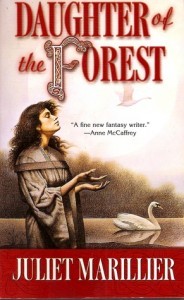
Low Fantasy: Jhereg by Steven Brust. Talk about the range of works one finds in fantasy, this could not be more different from Marillier’s beautiful high fantasy. I love most of the series . . . not Teckla, I must admit . . . but honestly, I still think first of Jhereg and Yendi when loaning books to a friend I hope to hook on fantasy.
Fantasy with a non-European setting: Bridge of Birds by Barry Hughart. What a delightful narrator Number Ten Ox is. And of course we all enjoy Master Li, despite the slight flaw in his character.
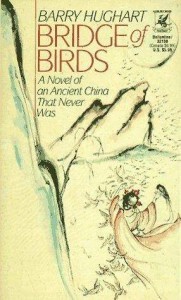
Urban Fantasy: Wide Open by Deb Coates. Setting is important to me and I really loved the wide open country in this story, which sort of crosses ghost stories with UF. Coates has a knack for dialogue and I love how she handled Halley’s father.
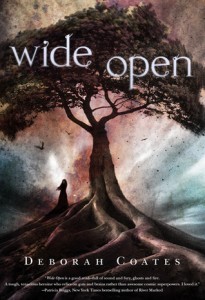
Contemporary Fantasy: Tea With the Black Dragon by RA MacAvoy. *Is* it a fantasy? A little hard to decide for sure, except naturally I totally believe Mayland Long truly is a dragon. “Contemporary” is a little bit of a stretch, although this was a contemporary setting when it first came out in 1983.
Historical Fantasy: Lord of the Two Lands by Judith Tarr. This might be the novel that hooked me on historicals in general. I didn’t distinguish between historical fantasy and straight historical for a long time. (I still don’t, really.) Anyway, in this story we get Meriamon, daughter of Pharaoh and Priestess of Ammon, coming from Egypt to find Alexander and persuade him to come to Egypt and throw out the Persians. A wonderful story, and if I’ve never mentioned it before, well, it was an easy choice for this list.
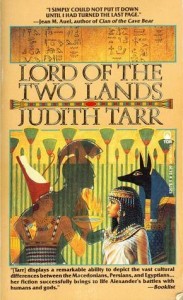
Hard SF: The Integral Treesby Larry Niven. What a wonderful setting: a gas torus, a ring of air around a neutron star. Also, Niven was lucky enough to get a great Michael Whelan cover.
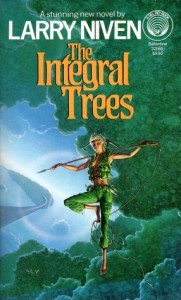
Softish SF: The Gaian trilogy, Titan, Wizard, and Demon, by John Varley. I cannot believe Varley is so forgotten these days, even if he did switch to writing near-future thrillers. His SF is fantastic, especially this trilogy, and imo is one of the older SF works that ought to particularly appeal to the modern SF audience.
Space Opera: the Vatta’s War series, starting with Trading in Danger, by Elizabeth Moon. I hereby declare (as I believe I have before) that space opera is not the same thing as military SF, and this series is the former. Really well done; this series managed to keep my attention even when the number of pov protagonists started to proliferate later in the series.
Military SF: Terms of Enlistment by Marko Kloos. Now, this one is military SF. Fast paced, snappy dialogue, fairly grim world where one of the few pathways out of poverty is military service. I never have quiiite gotten around to reading the sequel, but that’s just because I am so desperately behind with my TBR pile all the time. Eventually I will re-read the first and then go on.
Sociological SF: Lilith’s Brood by Octavia Butler. What brilliant books these are — disturbing and fairly dark, but brilliant. I want to re-read them, though re-reading doesn’t help much with whittling down the TBR pile. Also, these would not be books I could re-read while working on my own manuscript. They’re too compelling, even if I’ve read them before.
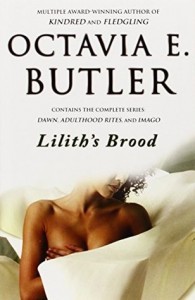
Alternate History: Celestial Matters by Richard Garfinkle. In this cleverly designed world, Ptolemaic astronomy, Aristotelian physics, and Taoist alchemy are all true. The story features a scientist who travels on a spaceship carved from a piece of the moon to bring a piece of the sun back to Earth. It’s rather light on characterization, but the ornate worldbuilding is very cool.
Alternate Contemporary: Tomorrow, When the War Began by John Marsden. Australia has been invaded by . . . somebody. That bit is never really clarified, since after all it doesn’t make a bit of sense. And it doesn’t have to make sense because the story is SO GOOD. Marsden totally captures the teenage voice of the protagonist. It’s a wonderful series that I’m dying to re-read, eventually.
Thriller: The Blue Place, Stay, and Always by Nicola Griffith. I’m not completely sure these are thrillers? Maybe they’re mysteries? Or kind of literary? You see how I dissolve into questions when trying to place this trilogy into a genre or subgenre. I’m defining them as thrillers for the purposes of this list, though. A wonderful trilogy, with a fascinating protagonist whom I would totally want on my side in a tight spot. This is one of those odd trilogies where I liked the second book best — though they’re all really good.
Mystery: the entire Nero Wolfe series by Rex Stout. My mother has all these. How many are there? Okay, Wikipedia says 33 novels and 39 short stories. Anyway, you can get your snappy dialogue riiight here. This might be the very best mystery series ever written.
Historical Mystery: The Ninth Daughter by Barbara Hamilton / Barbara Hambly. Okay, listen, as a *mystery*, there are better. But hardly anybody does a historical setting better than Barbara Hambly, and I love her characterization. When I read this book, I’d forgotten that “Barbara Hamilton” was a pen name for Hambly, but I recognized the way she was handling the characters and knew it was her before I googled it to confirm. Also, let me add that this series is gentler than the Benjamin January series, not that terrible things don’t happen, but still. And it is just so cool to have Abigail Adams as the protagonist.
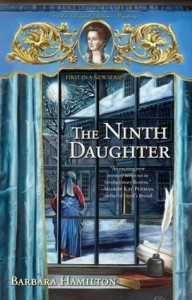
Historical Thriller: The Lymond series by Dorothy Dunnett. This giant series is so slow-paced at times that I’m not 100% sure it counts as a thriller. But the suspense builds so much that I think it does. The first book is wonderful and self-contained; the rest form a single long arc.
Historical Romance: Render Unto Caesar by Gillian Bradshaw. Not all of Bradshaw’s books are romances, but many have a strong romantic subplot, this one perhaps more than any. I love the businessman protagonist with his ruthless commitment to forcing the Romans to follow their own law, I love the woman ex-gladiator he falls in love with, I love the setting . . . honestly, if you haven’t tried Gillian Bradshaw, this is a fine choice to start with.
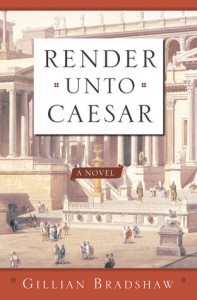
Historical: The King Must Die by Mary Renault. I had to force myself to pick something other than another Bradshaw, but here you go! A splendid story that brings the first part of the Theseus myth to life. I totally fell in love with bull leaping when I first read this story.
Literary: Thursday’s Children by Rumer Godden. A practically perfect story about family and giftedness and what it takes to achieve your dreams, and the difficulty that sometimes attends figuring out what your dreams even are. Flawed characters who in other hands would have been thoroughly unlikable are eventually rendered so sympathetically by Godden that you wind up rooting for everybody. I’m not even interested in ballet, but this story is deeply compelling.
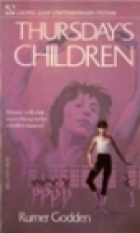
There you go — twenty books (well, or series) that everyone should consider adding to their TBR pile, even if the pile is threatening to tip over and collapse in an avalanche of words already.
If you’ve got a favorite work that has vanished from the view of today’s readers, drop it in the comments! I bet some of you will pick books I should have thought of.

March 27, 2016
Out of this World Easter Angel Food Cake
Okay, so, I got this recipe from Taste of Home’s Annual Recipes for 2016, and they call it “Divine Angel Food Cake,” which is fine. But the minute I saw the recipe I was all like EASTER! because it was obviously a perfect special occasion springtime cake. Or at least the lemon version of the cake was plainly a great springtime choice. There are other variations, too — chocolate-filled and sherbet-filled — but it was the lemon that I thought was most tempting.
So I made this cake for Easter. I haven’t made an angel food cake since I was a teenager, I’m pretty sure, but it turned out great. So if you want a wonderful springtime cake, I totally think you should give it a try, even if that means you have to get a tube pan.
Lemon-Strawberry Angel Food Cake
Cake
12 egg whites (1 2/3 C) — I had about ten egg whites in the freezer waiting for this cake, and I certainly suggest you freeze extra egg whites if you happen to get them while cooking other stuff. Thaw them overnight in the fridge.
1 C cake flour (I used all-purpose)
1 1/2 C sugar, divided
1 tsp vanilla
1/2 tsp cream of tartar, which lasts forever in the pantry, so don’t hesitate to pick up a small bottle.
1/4 tsp salt
Filling
10 oz lemon curd
1/2 C heavy cream
2 Tbsp powdered sugar
4 oz mascarpone or cream cheese
1 C sliced fresh or frozen (drained) strawberries
1 C powdered sugar
1-2 Tbsp fresh lemon juice
Okay, if you’re going to make your own lemon curd, like I did, then a day or so in advance you should make it according to, for example, this recipe. This will make lots more than you need for this cake, which is not a tragedy. If I happened to have a Meyer lemon, I would totally use that, but I used regular lemons for this cake.
Now, the night before you want to serve this cake, make the cake, like so:
Place the egg whites in a large bowl, like for example the bowl for your stand mixer, and let set at room temperature for thirty minutes. Meanwhile, stir 3/4 C of sugar into the flour and set that aside. Set the other 3/4 C sugar aside in a different small bowl.
Now preheat the oven to 325 degrees. Add the vanilla, cream of tarter, and salt to the egg whites. Beat on medium until soft peaks form. I actually beat it nearly on high, probably a little longer than I should have, but it was fine. You probably already know that “soft peaks” means that when you stop the beaters and lift them straight up, the egg white foam should come up in peaks and then fold over softly. Stiff peaks don’t fold over.
Okay, when you think soft peaks have more or less formed, add the plain 3/4 C sugar one Tbsp at a time. I added one Tbsp right after another with the mixer on high. Beat until stiff, glossy peaks form, which for me was as soon as I was done adding the sugar. Reduce the speed and fold in the flour-sugar mixture 1/2 C at a time. There you go, you’re ready to bake the cake.
Pour the batter into your ungreased, unfloured tube pan, smooth the top, and bake on the lowest oven rack for 45-50 minutes, until the top is pale gold and springs back when you touch it. Remove the pan from the over and immediately turn it upside down, balancing it on its tube or its little legs, whatever your tube pan requires. My pan (my mother’s actually), balances just fine on the tube. If you’re buying a pan, you might want to make sure it has some way to balance upside down.
Okay, anyway, you are now done with the cake! Leave it upside down in the pan and go to bed.
The next morning (or a couple of hours later), you can finish the cake. Cut around the edges of the pan and around the tube with a fillet knife or some reasonable facsimile thereof. Lift the cake out of the pan and put it on a platter. Mine cooperated beautifully.
Measure an inch down from the top and stick toothpicks around the cake. Cut the top inch off the cake and set that aside. Now use a paring knife or whatever to remove the interior of the cake, leaving a 1-inche shell all the way around. I got a little too close to the bottom of the cake, but it still worked, so whatever, but next time I would probably cut off just the top 3/4 inch and try to leave more below.
Obviously you can pause at this point to eat the extra cake bits. 100% of spaniels surveyed thought this was the best part.
Now, put the strawberries around the bottom of the tunnel.
Beat the 1/2 C heavy cream until soft peaks form, beat in the 2 Tbsp powdered sugar, soften and whip the cream cheese and beat that in. Stir in three oz of the lemon curd (or so, I didn’t measure). Layer some of this over the strawberries. You will have extra, which will be yummy with extra lemon curd and strawberries, layered in little glass dishes if you want to bother.
Now layer 7 ounces of lemon curd over the cream filling. I just used as much as I thought I could get away with. Replace the top of the cake and make a lemon glaze:
Whisk 1 C powdered sugar with 1-2 Tbsp fresh lemon juice. Spoon over cake and let drip down the sides.
Chill the cake at least four hours. I don’t know how crucial that is; I can’t actually see any reason you couldn’t slice the cake at once, but it says four hours. I assembled this cake early in the morning and we had it for dessert for Easter dinner, so I know it will hold a lot longer than four hours if you want.
Very pretty, very good, and just right for a spring holiday.

March 24, 2016
And so the TBR pile expands
My God, people, do you realize what is coming out in the first part of April?
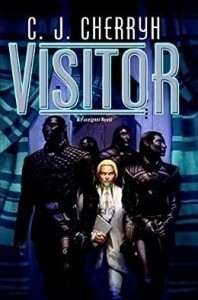
Do you know how desperately busy I’m going to be in April? WAY TOO BUSY TO READ THIS. Especially since I am going to want to re-read the previous book, too.
You know what else I’m going to be too busy to read?
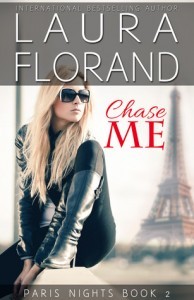
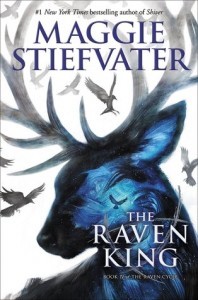
Although, I don’t know, sometimes I can slip a contemporary romance into my reading time even when I’m busy revising. Which I will be, because I am now officially late with The Winter Dragon or whatever the title will eventually turn out to be. Not very late, and I cleared this with my editor, but after talking it over with my agent, I really feel I need to do another moderately extensive revision of this manuscript before I send it in.
The Raven King is hopeless, though. I want to read the whole series from the top and there is just no way I will have time for that until fall.
I also haven’t yet read this one even though I grabbed it when it came out:
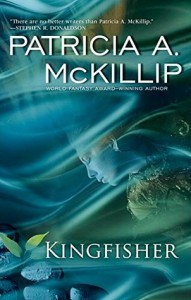
But that’s okay, because when it comes to McKillip, I particularly enjoy the anticipation.
You know what else haven’t even gotten to read yet, even though they both also came out earlier this month?
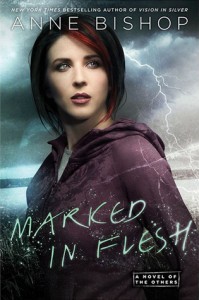
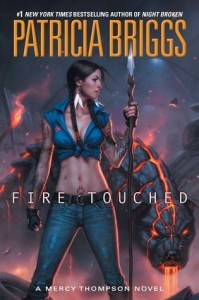
Unbelievable. I’m dying to read both of those, and I haven’t done more than read the back cover copy of either.
Here’s what it says about Fire Touched: Defying the most powerful werewolf in the country, the humans, and the fae, Mercy, Adam, and their pack choose to protect the boy no matter what the cost. See that? I bet they’ve defied Bran Cormick himself. That’s a great situation to drop everyone in! I’m going to love this book. It came out March 8th and I don’t even have a copy yet.
But! This one has shipped, Amazon says:
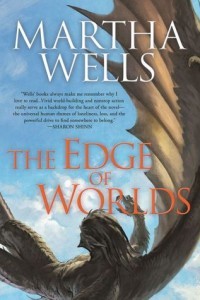
And I will MAKE TIME to read this one. I’m not sure there’s any other book I’m more looking forward to this year.
How about you, any of these new releases — or any other title — that you’re particularly excited about?

March 23, 2016
Women in history, women in epic fantasy
A hugely useful post by Kate Elliot at tor.com: Writing Women Characters Into Epic Fantasy Without Quotas.
This post offers brief descriptions of women’s lives and roles in many different cultures and times. This makes for interesting reading on its own, but the real usefulness of this post is the bibliography. Here is a selection of some of the referenced works:
Fatima Bercht, Estrellita Brodsky, John Alan Farmer, and Dicey Taylor, editors, Taíno: Pre-Columbian Art and Culture from the Caribbean
Sarah B. Pomeroy, Women in Hellenistic Egypt
Anne Walthall, editor, Servants of the Dynasty: Palace Women in World History
Steven A. Epstein, Wage Labor and Guilds in Medieval Europe
Jane Rowlandson, editor, Women in Society in Greek and Roman Egypt
Ferran Garcia-Oliver, The Valley of the Six Mosques: Work and Life in Medieval Valldigna
Gavin R. G. Hambly, editor, Women in the Medieval Islamic World
Maria Brosius, Women in Ancient Persia
Alvin M. Josephy, 500 Nations
Susan B. Hanley, Everyday Things in Premodern Japan
… and this is by no means a complete list; it’s a selection of the citations that particularly caught my eye.
It’s a very long post, but well worth perusal. And some of these books are definitely going on my TBR pile.

Action vs suspense
Here’s an interesting post by Joe Moore at Kill Zone, a blog that focuses on writing topics and particularly on thrillers and mysteries: Action vs Suspense.*
As far as thrillers are concerned, I’ve found that most action scenes just get in the way of the story. What I enjoy is the anticipation of action and danger, and the threat of something that has not happened yet. When it does happen, the action scene becomes the release valve.
There’s a succinct encapsulation of the role of action. After some consideration, I think it’s true. Sometimes I become gradually unhappy with the experience of reading a particular book because I get too tense about the eventual outcome. This is always due to build up, not to the actual action. When the suspense builds up . . . and builds up . . . and builds up . . . then one of a few possible things happens:
1. I trust the author, so I keep going in the expectation that Things Will Work Out, and they do. Sometimes “working out” is pretty loosely defined, but after the action has ended and the dust settles, the resolution is at least fairly hopeful for at least some of the important characters.
2. I trust the author, so I keep going in the expectation that Things Will Work Out, and they totally do not. This would be a grimdark kind of reading experience, or perhaps a literary reading experience, and in either case I am probably done with the author forever. Tana French and Joe Abercrombe come forcefully to mind here, though I did read no fewer than four of Abercrombe’s books before I gave up and put him on my Never Again list. Oh, yeah, the move “Saw,” that was totally this kind of experience. (Why did no one WARN me???)
3. I’m not so sure I trust the author, so when I get too tense, I flip ahead and read a bit of the ending. This is really rare for me, but it does happen. And it particularly happens with a new-to-me author who is especially good at revving up the anticipation of disaster, not the author who throws in a lot of action. It’s so true that action per se is not suspenseful.
I don’t think of myself as a high suspense kind of writer, partly because I probably know more or less how the book is going to end and that Things Will Work Out and partly because I think my books are basically middle-of-the-road for suspensefulness for fantasy. But here’s what Charlotte said about MIST:
The Keeper of the Mist is one I think I will enjoy more the second time around. This first time through, right inside of the thick of the tenseness along with Keri, it was awfully hard to be relaxed and happy and delight in the fascinating magic … even though I peeked at the end, it still wasn’t enough to keep me from being tense. Because most of the time Keri is desperately trying to figure out what she should be doing in rather difficult, potentially life ending, situations, and she has to save not just herself, but her whole country.
Of course I’m really pleased with this. It’s hard for me to see the suspense building in this story even though I’m deliberately dropping Keri and everyone into one fire after another, because, well, after all, I knew through quite a lot of the actual writing how everything was going to come together to (spoiler!) save the day.
I totally understand the feeling that you’ll enjoy a book more the second time around, though. I sometimes feel exactly like that, for exactly the same reason. And there are definitely times when I prefer to read a story that has a lot less tension throughout. I think low tension is one of the primary qualities that defines a comfort read.
You know what fits into the less-tension category? Beauty and the Beast retellings.** And other fairy tale retellings. You know exactly how they’re going to come out, you know Beauty’s effort to save the Beast will work, you know there’s a happy ending. That’s part of the pleasure.
Romances are like that, too; isn’t it interesting that an entire hugely popular genre should be specifically low tension? I find myself sometimes reaching for a Regency or contemporary romance, or perhaps a cozy mystery, precisely because the last book I read offered a really successful high-tension, high-stakes, ratchet-up-the-suspense reading experience and after that I totally want a break.
So, suspense vs action. Both are great, but suspense comes via anticipation of peril, and action is the means by which the peril is resolved.
One of my very favorite thrillers, btw, is The Breach by Patrick Lee. The whole trilogy has tons of both suspense and action, plus mind-blowing plot twists. I definitely need to read the trilogy again and, now that I won’t be so caught up in the tension, really look at how Lee puts these stories together.
* This post starts with a declaration that the Nook is dead. If you click through and read the linked article, you’ll find that this is a bit of an overstatement. So far, book content on the Nook is not affected by Barnes & Noble’s revamping the Nook and what it does. However, if I had a Nook, I’d be thinking about transferring all purchased books to a laptop via Calibre, just in case. I hear there are ways to get around DRM if necessary.
** I finally did what I’ve been meaning to do for some time, and picked up samples of ALL the Beauty and the Beast retellings that anybody has ever recommended to me and put them all in a dedicated folder on my Kindle. So now I know what my go-to relaxation books will be for a while. Not that I will have a lot of time for reading in April. But now I *finally* be able to prioritize these.

March 22, 2016
Second pass through the Hugo nominations
After another week, with nine days to go, my personal ballot has filled out just a little more.
For novel:
Archivist Wasp by Nicole Kornher-Stace
Silver on the Road by Laura Anne Gilman
The Country of Ice Cream Star by Sandra Newman
Maybes for novel:
Uprooted
Ancillary Mercy
Bone Gap
Carry On
Bryony and Roses
I can only pick two more, of course, which is tough. I think I will leave Uprooted and Ancillary Mercy to other people. I really think Uprooted will get nominated for sure, and Leckie already won for Ancillary Justice, so I’m kind of looking at the others. Right now I’m inclined toward Bone Gap because (a) I really loved it; (b) it’s got this beautiful literary quality; and (c) a protagonist with an invisible disability is unusual, really cool, and very well-handled. So, even though I don’t get the horse and I’m not sure about Roza’s grandmother, I’m still leaning that way. Then I really don’t know. I’m still hoping to read a couple more, so we’ll see. I’ve just started The Long Way to a Small Angry Planet by Becky Chambers and I really like it so far.
For Novella:
Penric’s Demon by Lois McMaster Bujold
The Dark Earth Below by Martha Wells, from Stories of the Raksura vol. 2
I have room for three more, obviously. I’ve got a handful I’d like to read if there’s time, which given the date, maybe not.
Best Novelette:
Damage by David D Levine
Night at the Opera by Martha Wells
A Learning Experience by me
Best Short Story:
Things You Can Buy for a Penney by Will Kaufman
Cat Pictures Please by Naomi Kritzer
Wooden Feathers by Ursula Vernon
Today I Am Paul by Martin Shoemaker
…And I Show You How Deep the Rabbit Hole Goes by Scott Alexander
And of these, my favorite is “Wooden Feathers,” while the one that might drop off the list if I read something I like better is the rabbit hole one, though it’s definitely clever.
Best Graphic Story:
Nimona by Noelle Stevenson
Sandman: Overture Deluxe Edition by Neil Gaiman
Best Professional Editor (Long Form):
Toni Weisskopf. What happened to her last year was just shameful.
John W. Campbell Award:
Andy Weir, for The Martian. I don’t know for sure if he’s eligible, but I’ll nominate him and let the committee sort out that question.
The 1940 Retro Hugo
“Requiem” by Heinlein, as a short story
“Tlon, Uqbar, Orbis Tertius by Jorge Luis Borges for short story, which again may not be eligible because it first came out in Spanish.
“The Roads Must Roll” by Heinlein, as a novelette
“Magic, Inc” and “If This Goes On-” by Heinlein, as novellas
Captain America #1 and Batman #1 as graphic stories

March 21, 2016
Recent Reading: Bryony and Roses by T. Kingfisher
She was going to die because of the rutabagas.
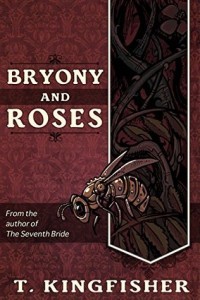
In her forward, T. Kingfisher, who also writes as Ursula Vernon, credits Robin McKinley’s Rose Daughter for her own dive into the Beauty and the Beast fairy tale. While I thought Rose Daughter was okay, for me no retelling will ever beat Beauty. But now, guess what? Bryony and Roses is officially my second-favorite Beauty and the Beast story. I loved it right from the rutabagas.
This isn’t a story that draws lightly on the fairy tale. This is a true retelling, and it’s wonderful. Bryony is a delightful protagonist: brave but still afraid of the monster that might be under the bed; kind but perfectly willing to carry a knife her sister gave her; innocent but not too innocent; bright but . . . well, actually not all that bright. To be fair, I didn’t think of the obvious solutions to the silencing aspect of the curse, either, until Bryony’s sister pointed them out. (To be *really* fair, I was kind of caught up in reading the story and so not trying to think of possible solutions.)
Anyway, it’s definitely Bryony’s voice that puts this story way up at the top of the heap of fairy tale retellings.
Unlike her sullen rosebushes at home, these were fully leafed out, little blunt ovals of green with dark red veins. There were flowers in every stage from barely budded to blowsy and dripping petals, all of them deep, deep scarlet. Small drifts of petals lay across the tiles.
She did not want to compare them to blood. It was a shame that there were so few dark red things in the world.
The Beast is also great. He’s appealingly sarcastic and really quite nice, even if he has kidnapped Bryony. I love the clockwork bee. It turns into such an integral part of the story, which I didn’t see coming at all. Granted, if I’d looked at the cover before reading the story, I might have guessed that the bee would be important. But I only looked at the cover just now, as I put it into this post.
Anyway, I also like the house. Often the house is pretty much a character in Beauty and the Beast, which is certainly the case here. This House is sort of friendly and sort of not at all friendly, and sometimes has, uh, questionable taste in décor and sometimes is just downright creepy.
The next room was full of birds. . . . There were birds of all shapes, all sizes, all descriptions. There were enormous eagles and tiny hummingbirds, great owls and strutting peacocks. There were partridge and pheasant and robins and ravens. There were birds that she could not name, with huge crests and beaks like shears; birds walking, birds flying, birds roosting with their heads under their wings.
And every single one of the was dead.
Disturbing!
Still, despite its occasional creepiness, this retelling is definitely not horror; not even dark fantasy. It’s Beauty and the Beast re-envisioned but still intact, and it’s completely charming.
Also, I think Kingfisher pulls off quite a nice ending, which imo is a challenge and a half for this particular fairy tale. Not to mention that really brilliant first line, which may be my favorite first line ever. Rutabagas, seriously! The rutabagas even have their humble but distinctive role to play in the resolution of the story, too. This truly is a gardener’s version of Beauty and the Beast.
So, yes, Bryony and Roses is highly recommended if you’re into Beauty retellings, and now I really must check out what else T. Kingfisher/Ursula Vernon has written. Especially since “Wooden Feathers” is probably my favorite short work on my Hugo nomination list this year. Thank you to Jen who recommended the former, and Linda S who drew my attention to the latter.

March 20, 2016
Poetry Sunday
I only just happened across this poem, based on a line from Lolita, which I haven’t read and don’t plan to, but I have to admit this is a very good line. And I like the poem, which is rather grim and then segues suddenly into quite a different tone.
“My very photogenic mother died in a freak accident (picnic, lightning) when I was three.” – Lolita
Picnic, Lightning by Billy Collins
It is possible to be struck by a meteor
or a single-engine plane
while reading in a chair at home.
Safes drop from rooftops
and flatten the odd pedestrian
mostly within the panels of the comics,
but still, we know it is possible,
as well as the flash of summer lightning,
the thermos toppling over,
spilling out on the grass.
And we know the message
can be delivered from within.
The heart, no valentine,
decides to quit after lunch,
the power shut off like a switch,
or a tiny dark ship is unmoored
into the flow of the body’s rivers,
the brain a monastery,
defenseless on the shore.
This is what I think about
when I shovel compost
into a wheelbarrow,
and when I fill the long flower boxes,
then press into rows
the limp roots of red impatiens–
the instant hand of Death
always ready to burst forth
from the sleeve of his voluminous cloak.
Then the soil is full of marvels,
bits of leaf like flakes off a fresco,
red-brown pine needles, a beetle quick
to burrow back under the loam.
Then the wheelbarrow is a wilder blue,
the clouds a brighter white,
and all I hear is the rasp of the steel edge
against a round stone,
the small plants singing
with lifted faces, and the click
of the sundial
as one hour sweeps into the next.





